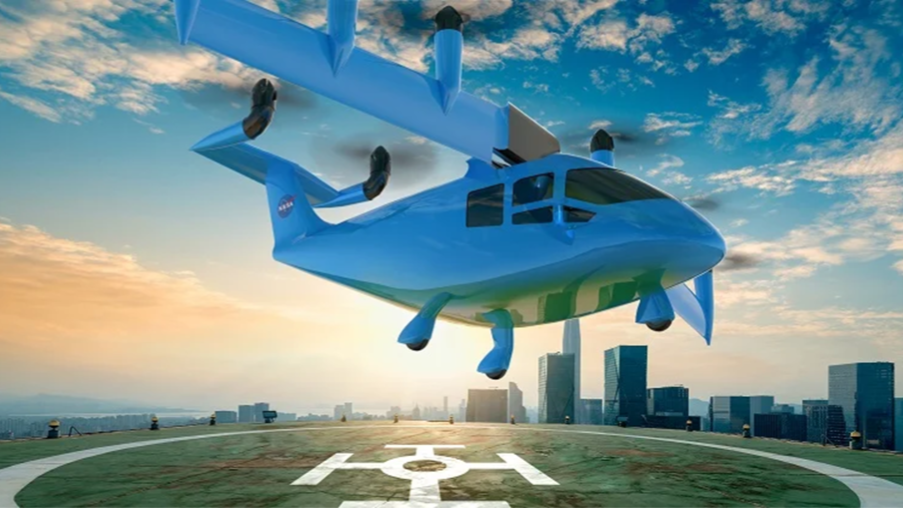More Information
eVTOL aircraft are now capable of ranges of nearly 200 miles, with battery technology advancements increasing this range regularly. In addition to range, eVTOL are perceivably quieter than conventional aircraft due to the lack of a transmission and combustion engine and designs using multiple lift and thrust rotors and brushless electric motors. There are currently over 100 different eVTOL aircraft prototypes undergoing testing, with a handful planning for Federal Aviation Administration (FAA) certification in late 2024. Learn more on the
FAA AAM website.

eVTOL aircraft will utilize both existing infrastructure such as airports and new infrastructure to take off and land called vertiports. Vertiports will provide a terminal facility for passengers as well as support services for eVTOL aircraft such as electric charging and maintenance. The NASA image below depicts an eVTOL utilizing a rooftop vertiport, similar to how a helicopter utilizes a helipad. To learn more about eVTOLs and vertiports, please view this playlist of
NASA AAM Playbook videos.